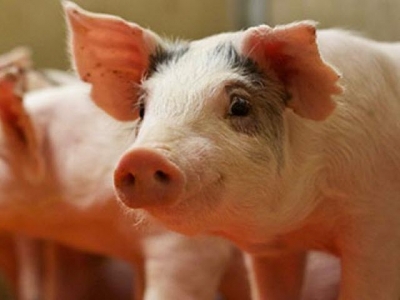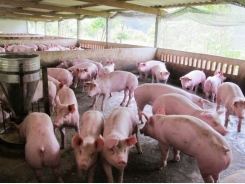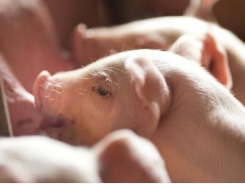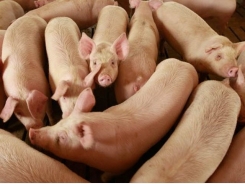Histidine research may help lower cost of pig diets

Kansas State researchers have verified guidelines for amino acid histidine for nursery pigs.
Kansas State University researchers have reported a new breakthrough in their work to formulate lower-cost pig diets: the nursery pig's requirements for the amino acid histidine.
Swine nutritionists now have more information at their disposal to formulate foods that help pigs grow safely, save money for producers and reduce the amount of nitrogen excreted to the environment, the university explained.
“For a pork producer, what it means is that the nutritionist for the feed company they’re working with can formulate the diets with more feed-grade amino acids, which allows them to lower their costs and use less of the expensive protein sources,” Mike Tokach, university distinguished professor in the Kansas State department of animal sciences and industry, said.
In recent years, nutritionists have been substituting feed-grade amino acids in swine diets for expensive protein sources such as soybean meal, fish meal and others. The amino acids commonly used in diet formulations for pigs are lysine, threonine, tryptophan, methionine and valine.
In two recent studies, the Kansas State swine researchers formulated diets for more than 700 nursery pigs to determine the appropriate level of histidine that could be added to the diet. Researchers believe histidine may be a limiting amino acid, or one that is in insufficient amounts in a food.
Kansas State doctoral student Henrique Cemin did much of the work to determine what ratio of histidine to lysine would work best to lower costs and still meets the pigs’ protein needs.
“We found that the requirement would range between 29% and 30% of lysine,” Cemin said. “In the second trial, we formulated diets that were more around the level of 30% (histidine) so that we could have a more precise estimate of the requirement, which happened to be 31% of lysine.”
In 2012, the National Research Council reported in its "Nutrient Requirements of Swine" publication that the requirement for histidine was 34% of lysine.
According to Kansas State’s findings, that number can be much lower in order to promote feed intake and gain in nursery pigs.
“When you’re talking about using 31% or 33% or 34%, it makes an enormous impact on how much of the other synthetic amino acids you can add before histidine becomes limiting,” Tokach said.
Kansas State has previously done similar work with another limiting amino acid, isoleucine, which will soon be the newest feed-grade amino acid available to producers, the university said.
Related news
Tools

Phối trộn thức ăn chăn nuôi

Pha dung dịch thủy canh

Định mức cho tôm ăn

Phối trộn phân bón NPK

Xác định tỷ lệ tôm sống

Chuyển đổi đơn vị phân bón

Xác định công suất sục khí

Chuyển đổi đơn vị tôm

Tính diện tích nhà kính

Tính thể tích ao




 Improving piglet gut health with nutrition
Improving piglet gut health with nutrition  Pigs digest fiber efficiently even at high inclusion…
Pigs digest fiber efficiently even at high inclusion…